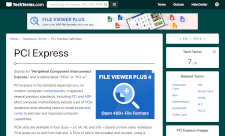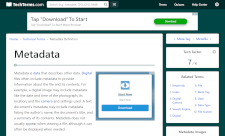Banner Ad
A banner ad is one of the oldest and most recognizable forms of online advertising. It is a rectangular graphic displayed on a webpage, designed to catch attention and drive clicks to an advertiser's website or landing page. Banner ads helped pioneer the web's ad-supported model in the 1990s, allowing sites (like TechTerms.com) to provide free content while generating revenue.
The original banner ad size was 468 pixels wide by 60 pixels tall (468x60).

As screen sizes increased, so did the size of banners. Several new banner dimensions were also standardized for desktop browsers. Common banner sizes now include:
- 468×60 (original banner)
- 728×90 (leaderboard)
- 970×90 (large leaderboard)
- 970×250 (billboard)
- 300×250 (medium rectangle)
- 160 × 600 (skyscraper)
- 300 × 600 (half-page)
- 320 × 50 (mobile banner)
Modern banner ads may be static images, animated GIFs, rich media ads (with embedded video), or responsive HTML5 creatives that adapt to different screen sizes.
While banner ads remain common, newer formats have gained popularity, including native ads (which blend seamlessly with a site's content), video ads, interstitials (full-page ads displayed between content), and anchor ads (fixed to the edge of the window). Still, 30 years after they first appeared on the web, banner ads remain a cornerstone of display advertising. They continue to provide businesses with a straightforward way to promote their products and services online.

 Test Your Knowledge
Test Your Knowledge
